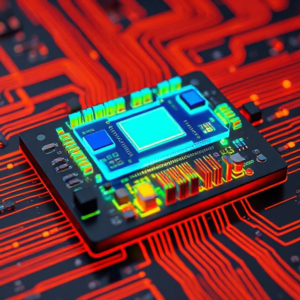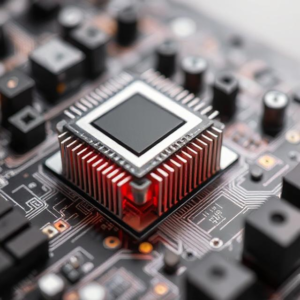What is Power in Electrical Circuits?
Power in an electrical circuit is the rate at which energy is consumed or converted into another form like heat, light, or mechanical energy. It tells us how fast electrical energy is being used.
-
Unit of Power: The unit of power is the watt (W).
-
1 watt means 1 joule of energy is used per second.

Why is Power Important?
Power tells us how much work a circuit or device can do, or how much energy it uses over time. It helps in:
-
Designing circuits
-
Choosing correct components
-
Ensuring devices operate safely without overheating
Power in DC Circuits
In a DC (Direct Current) circuit, the voltage and current are constant in direction and magnitude.
Power can be calculated easily using voltage (V) and current (I):
Basic Power Formula
Where:
-
= Power in watts (W)
-
= Voltage in volts (V)
-
= Current in amperes (A)
This formula means power is the product of voltage and current.
Relationship Between Voltage, Current, Resistance, and Power
Using Ohm’s Law, where is resistance (in ohms, ):
We can write power in other forms by substituting or :
-
Using
-
Using :
So power can also be:
Interpretation of the Formulas
-
shows power depends on the square of current and resistance.
-
shows power depends on the square of voltage divided by resistance.
Power Absorbed and Delivered
-
Power delivered by the source: The energy given by the voltage source to the circuit.
-
Power absorbed by the resistor: The energy converted to heat or other forms in the resistor.
In DC circuits, power absorbed by the resistor equals power delivered by the source (assuming ideal conditions).
Example Problem
Suppose you have a resistor of 10 ohms connected to a 5V battery. Find the power consumed by the resistor.
-
Given: ,
-
Calculate current
-
Power
Alternatively:
Power in Series and Parallel Circuits
-
In series circuits, current is the same through all components, so power depends on current and resistance of each component.
-
In parallel circuits, voltage across each branch is the same, so power depends on voltage and resistance of each branch.
Total power in a circuit is the sum of power consumed by all components.
Summary
-
Power measures energy usage rate in a circuit.
-
In DC circuits, power is
-
Using Ohm’s law, power can also be or .
-
Power tells us how much energy a device or resistor uses or converts.
-
Calculating power helps in designing efficient and safe circuits.
-
In series, current is constant; in parallel, voltage is constant, affecting power calculations.
Summary
Power in DC circuits is the rate at which electrical energy is used or converted. It is calculated by multiplying voltage and current (). Using Ohm’s law, power can also be expressed as or . Power is measured in watts and helps us understand how much energy a component consumes. In circuits, power distribution depends on whether components are in series or parallel. Knowing power allows engineers to design circuits safely and efficiently.











